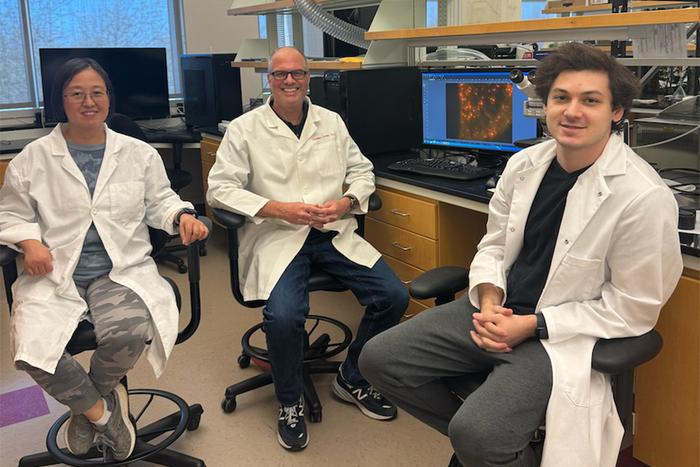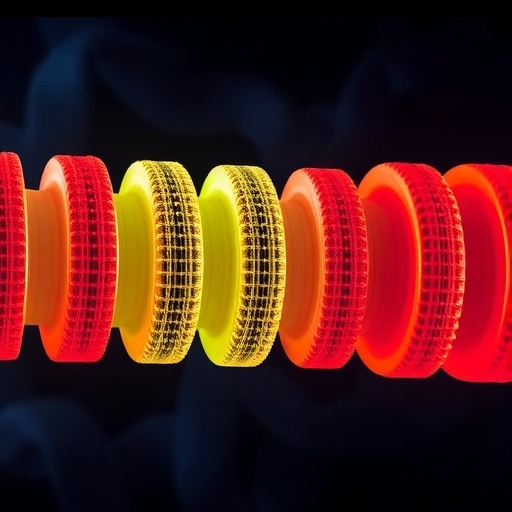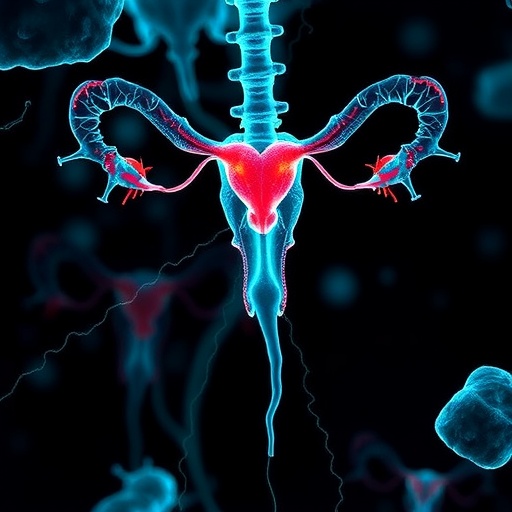Christian Lemon, Ph.D., an associate professor in the School of Biological Sciences at the University of Oklahoma, often thinks about temperature sensation and the brain when eating a chilled mint cookie. Now, research from his lab examining oral temperature perception has been published in The Journal of Neuroscience.

Credit: Christian H. Lemon
Christian Lemon, Ph.D., an associate professor in the School of Biological Sciences at the University of Oklahoma, often thinks about temperature sensation and the brain when eating a chilled mint cookie. Now, research from his lab examining oral temperature perception has been published in The Journal of Neuroscience.
In their research, Lemon’s team investigates how cold receptors in the mouth are activated by cooling temperatures, how those signals are transmitted to the brain and how those transmissions are generated into a cooling sensation.
“These receptors are designed to respond to cooling temperatures but are also activated by menthol from mint plants. This feature is why the flavor of a mint cookie can appear enhanced when eaten cold,” he said. “While sometimes called a cold and menthol receptor, it’s technically known as TRPM8. These receptors begin to activate when temperature falls a few steps below your core body temperature.”
According to prior research, TRPM8 receptors are activated by temperatures below about 86 degrees Fahrenheit, 30 degrees Celsius, and are strongly stimulated by colder temperatures near 50 degrees Fahrenheit, 10 degrees Celsius.
“Our study found that genetically removing TRPM8 receptors in a mouse model reduced the brain’s response to mild cooling in the mouth, while responses to significantly colder temperatures remained partly intact,” he said. “Interestingly, this process also impacted how the brain responded to warm temperatures. We found that without input from TRPM8 receptors, the brain’s response to warmth moved down into the cool range, essentially making cooler temperatures appear as warmer by the brain’s response.”
Lemon’s team theorized that the brain might be confusing, or “blurring,” cooling and warming sensations when TRPM8 was silenced. To explore this idea, they precisely controlled the temperature of liquids consumed to monitor oral temperature preference behavior. These results compared how temperature messages from TRPM8 receptors in the mouth tracked along nerve fibers into the brain and influenced how the brain may interpret those signals.
“We found that the control group with intact TRPM8 receptors preferred to drink mild cool and colder fluids and avoided warmed fluids. Those without the TRPM8 receptor, however, avoided sampling both warm and mild cool fluids,” he said. “This common reaction to cool and warm temperatures agreed with the blurring of these temperature ranges we observed in the brain responses of TRPM8 silenced mice. This receptor appears to be required for the brain to correctly recognize warm temperatures inside the mouth and to distinguish them from cooling.”
Based on these findings and because temperature is such a big component of oral sensation, Lemon’s team plans to explore how temperature sensory signals from TRPM8 and other pathways affect taste and eating preferences. They believe this could help understand the role of temperature sensing in a unique health-related context.
“Combining our research findings with those from other labs and other papers will start to tell us the basics of how temperature recognition works in the brain in different settings,” he said. “There’s still a lot of mysteries in the brain that we don’t understand, but the basic principles being defined in studies like ours are the building blocks to future discoveries.”
Learn more about this research through the Lemon Lab at the University of Oklahoma. The study, “Separation of oral cooling and warming requires TRPM8,” is published in The Journal of Neuroscience, DOI no. 10.1523/JNEUROSCI.1383-23.2024 and was funded by NIH grant R01 DC011579-13.
Journal
JNeurosci
DOI
10.1523/JNEUROSCI.1383-23.2024
Method of Research
Experimental study
Subject of Research
Animals
Article Title
Separation of Oral Cooling and Warming Requires TRPM8
Article Publication Date
13-Mar-2024





